
Community Involvement
As a rural-based organization we are conscious of our role in enabling conditions for better quality of life for communities in and around our manufacturing plants. We seek to contribute to the social and economic development of the communities in which we operate. We do this in consultation with the community.
We carry our various projects in collaboration with various eminent institutions of the Somaiya Trust. The activities undertaken to benefit the communities by Somaiya Grameen Vikas Kendra include health, education, social and cultural programmes.
Healthcare
We undertake a number of voluntary activities within the area of community health. Healthcare is one of the biggest challenges for the people in remote villages due to the lack of availability of affordable health facilities. People in villages have to travel long distances to access healthcare services, especially specialist services. This is a significant cost in addition to the lack of reliable transportation available.
To enable villagers to get access to health care, preventive and for treatments, we organize free multi-diagnostic medical and drug distribution camps in association with K. J. Somaiya Medical College and Research Center, Mumbai at Sakarwadi and Sameerwadi. More than 2300 patients from 75-80 villages in and around our plant campuses visit each of these camps.
Hundreds of patients identified in these camps that need specialized treatments such as cataract, cancer and other operations are treated at K. J. Somaiya hospital, Mumbai, or deputed to M. M. Joshi Eye Institute, Hubli for cataract operation. 6 patients were deputed to KLE hospital, Belgaum for ENT and other surgery and treatment during 2015.
Awareness Creation
We take various initiatives to promote public knowledge on health issues such as ill effects of Tobacco, HIV, and other health issues.
Success Stories

"I have 3 sons and 2 daughters. All are married and daughters have settled with their spouses. Similarly, all my sons have also got married and looking after their work. It is very painful to let you know that none of my sons is taking care of me and my wife. Hence, we are forced to stay separately in a rented house. I receive Rs.500/- old age pension from Govt. and my wife works as a daily wage labourer."
I was suffering from very poor vision due to cataract, but was unable to get it operated due to lack of finance. I was examined in a medical camp organized by the Somaiya company and got operated for cataract. Further, I was also suffering from hernia, which was also operated in a recent medical camp.
I never forget the medical help availed from Somaiya Company, because of their help today I am independent.
Mr. Satappa K. Hunshyal
- Age : 77 years
- |
- Occupation: Agriculture
- |
- Place: Saidapur village in Bagalkot dist of Karnataka
- |
- Qualification: 7th Class
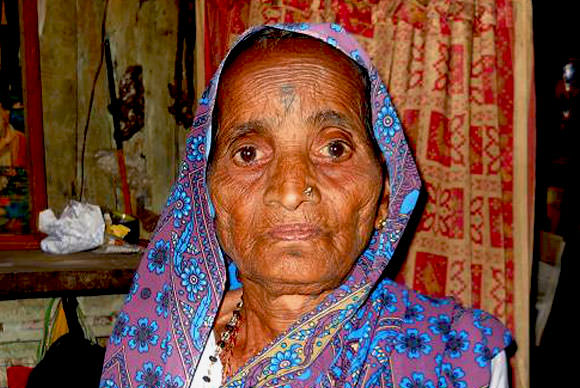
"I lost my husband, son, daughter-in-law and also daughter. My sister also passed away. Now I am staying with my grandson, who is studying ITI. "
The little property that I had was also taken away by my distant relatives. I stay in a rented hut. I get Rs.500/- from Govt. as old age pension and work as maid in 4-5 houses for livelihood.
I was suffering from poor vision and was unable to work. I got news of the Somaiya factory medical camp and examined for cataract operation. Now I am able to work as maid as I have regained my vision.
Ms. Balavva V. Algond
- Age : 68 years
- |
- Occupation: Agriculture
- |
- Place: Hallur village in Belgaum dist of Karnataka
- |
- Qualification: 7th Class
2014 : Bagalkot Weavers
As part of GBL’s commitment to improving the Quality of Life in rural areas through livelihood, we funded the founding of an innovative and exciting project Bhujodi to Bagalkot by Somaiya Kala Vidya, for the development of traditional weavers of Ilkal saris from the Bagalkot District of Karnataka.
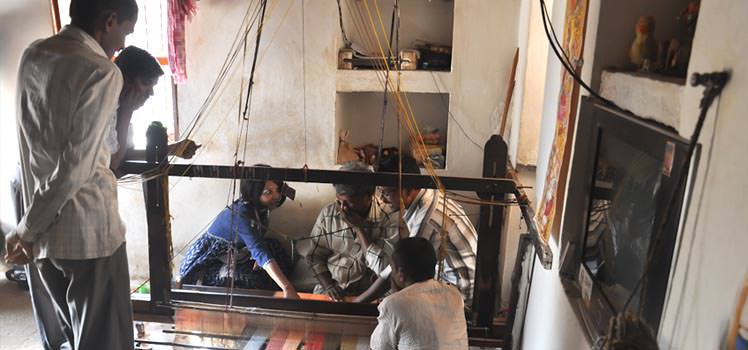
Hand Weavers of Bagalkot
The hand weavers of Bagalkot are in a precarious situation. They make traditional saris with a strong and well-loved identity for local clients. But there is severe competition in power loom copies. Handloom is relegated to towels, handkerchiefs and polyester yardage for subsidized school uniforms, and wages are unsustainably low.Granite quarries nearby offer attractive wages, and many weavers have left their profession. Of 10,000 hand weavers, about 2,400 are members of two cooperative societies. Others do job work.
There is limited opportunity for creativity or entrepreneurship.The objectives of the Somaiya Kala Vidya initative was to provide an opportunity to the traditional hand weavers of Bagalkot to experience the potential of contemporary design and urban markets for their products by working with designers to develop new product ranges.

Design Innovation
Bhujodi weavers traveled to Bagalkot and identified participants for the project. In March 2014, five weavers from Bagalkot visited Bhujodi, where over two days, they experienced first hand the impact of appropriate design innovation. After extensive formal and informal information-sharing and brainstorming, the group planned products for an exhibition/sale at a prestigious gallery in Mumbai.

Exhibition in Mumbai
The exhibition held in Mumbai was highly successful. Customers appreciated the new cotton saris and felt the prices were reasonable. From the installation to the last sale of this first experience in Mumbai, the Bagalkot weavers demonstrated a genuine collective spirit. Each afternoon a team presented their new work, followed by an informal tea with customers. Those who attended were duly impressed to hear first-hand the physical and psychological challenges faced and met,and to share the joy and self esteem of creativity so irresistible in
these artisans. Following the exhibition, the weavers were attended various courses, to take the training forward.
2009 : Ankur project : (Prevention of blindness in young children)

Beneficiaries of the project were provided with all 3 doses of vitamin A capsule as suggested by the doctors of K. J. Somaiya Hospital, Mumbai during July 2009 as mentioned below. The target group was 3 to 16 years of age.
Further an eye examination camp was conducted for 318 students that had screened and provided with vitamin A dose to know the improvement among the beneficiaries in association with K. J. Somaiya Medical College and Research Centre, Mumbai on 4th, 5th and 6th March 2010. Out of 318 students, 230 (72.33 %) students have improved their sight with
vitamin A dose. Whereas 27.67 percent of the students (88) were found with vitamin A deficiency and they had again provided with Vitamin A dose as per the recommendations of doctors.
2009 : Animal adoption at Mysore Zoo

Two animals namely Gorilla and Leopard were adopted for one year from 9th November 2009 to 8th November 2010 at Shri Chamarajendra Zoological gardens, Mysore. An adoption charge included food, medical care, and general maintenance of the animals for the duration of one year. The same was renewed every year.
Anti-poaching kit to preserve tigers in Dandeli wildlife division
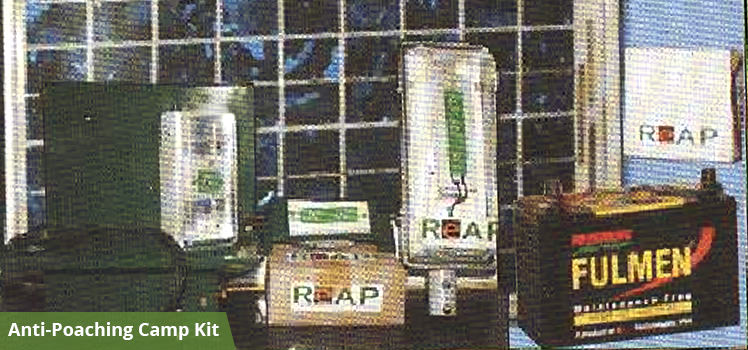
To preserve wildlife, ten anti-poaching camp kits were donated to Dandeli – Anshi Tiger Reserve worth Rs.2, 50, 000/-. These equipments helped the anti-poaching team which travel to deep forest to get indoor and portable light, walkie-talkie charging, and mobile charging with the help of paddle generated power. Apart from this they were also provided solar lights etc. By donating these equipments, the anti-poaching team no more needed to travel to cities / towns frequently to get batteries for power. These materials were handed over to forest department by Dr. Vijayakumar P. Kanavi,
Manager CSR in a function organized by Ansahi Tiger Reserve office Dandeli on 29th March 2010.
2006
In 2006, as a result of our continuous efforts, the State Dept. of Education sanctioned Govt. High School for Madbhavi village. Further, Kuvempu and K. J. Somaiya birth centenary celebration committee donated an amount of Rs.200000/- (Rupees two lacs) towards the purchase of books, laboratory equipment etc.

State Level Seminar on Peoples Participation in Panchimukhi Program
This program led to the creation of awareness for improving quality education, harmonious living and enhancing the people’s power. The inauguration of this seminar was done by The Commissioner of Education, Govt. Karnataka. In this function, the commissioner announced that Madabhavi was the first village in Karnataka to have 100% attendance in Govt. School.
Law Awareness Program
With the help of local judicial court, law awareness program was conducted in collaboration with the help of self-help groups of the village. More than 500 villagers have been benefitted by this initiative.
Adult Education
For the benefits of Devadasis, self-help groups and others, adult education classes were conducted. Nearly 150-175 women have been benefitted by this initiative.
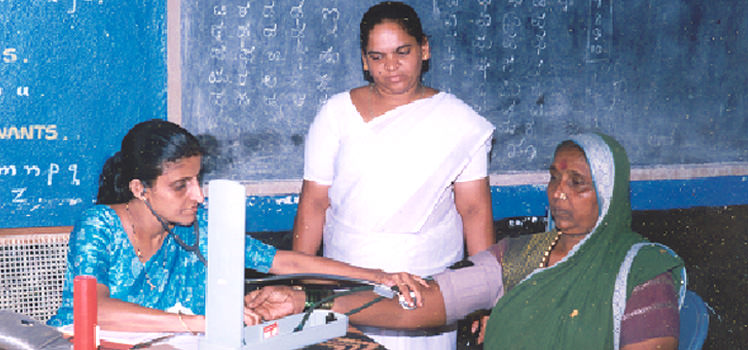
Health:
In the village only a few houses (about 10%) had separate toilet facilities and rest of the villagers did not even have a common toilet. But with our continuous efforts, Govt. authorities have constructed 24 common toilets at different locations separately for women and men.
Dental Check-up Camp:
Free dental check-up camp was organized with the help of KLE’s Dental College, Belgaum. More than 154 villagers were treated at this camp.
Medical Camp:
With the help of local doctors, a free medical camp was organized wherein more than 300 patients have taken the benefit.
HIV / AIDS Awareness Program:
These awareness programs were organized in the villages with the help of NGOs working for a project HIV / AIDS.
Tree Plantation:
As many as 500 trees were planted in the village all along the streets and roads with the help of social forest department.
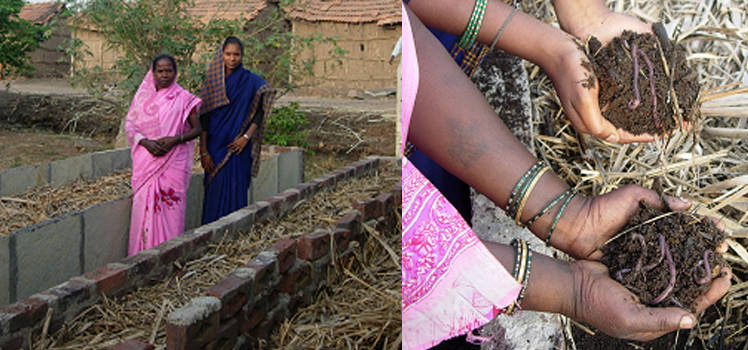
Food and Nutrition Awareness:
One-day seminar was organized for the benefit of lactating mothers, pregnant women, kids, adults and old people etc. with the help of Dept. of Food and Nutrition, University of Agricultural Science, Dharwad.
Empowerment: Rehabilitation of Devadasis:
As many as 16 Devadasis have been rehabilitated through counselling. To create alternatives jobs for them, they were trained in tailoring, vermicompost etc. for the purpose of self-employment.
Now a few of them are earning income by stitching clothes, or making vermicompost, some work as farm labourers and a few of them rear sheep and buffalos. This has led to empowering the women who were earlier exploited.
Seminar for Panchayats members:
In 2005, a seminar Abhudayad Ariu – Acharaneya Samavesha was organized by SGVK to enhance knowledge level of Panchayat. There were 328 members of 15-gram panchayats covering 28 villages, which are within10-12 km radius of GSML-Sameerwadi. The following topics were covered during this seminar by holding group discussions and informal discussions even at the individual level.
- Importance of education and role of youth in rural development
- Health and HIV / AIDS,
- Work ethics
- De-centralization of power and development.
- Importance of water conservation and rainwater harvesting
- Ringana Samudaya (surrounding communities)
- Role of press in Rural Development
- The need for cooperation between organized and un-organized labors
- Role of sugar industries in rural development
- Biomass for rural electrification
- Self-reliance in agriculture
- Agriculture and allied matters
2003 : Education

During 2003, the student’s attendance in primary school was about 65 to 70 percent. In a span of 4-5 months this was 100 percent by re-enrolment of school dropouts after home visits and counselling the parents of the students. Earlier the school was up to 7th standard, it was upgraded up to class 10th. There was also a shortage of classrooms, but with our continuous efforts with Government officials, classrooms were increased from 6 rooms to 10 rooms.
Facilities like toilets for girls and boys and open-air theatre were provided for the students. Also, the teacher strength was raised from 4 to 9. Later we conducted general knowledge tests, essay competitions, science quiz etc., at least once in two months. Due to these test the students developed their knowledge and more students got admission in residential schools.
2003 : Employment

Lake: The village was facing severe shortage of drinking water during summer. Villagers had to travel long distances to fetch drinking water. Bore wells, open wells, and nalas / streams used to dry up. Looking to this SGVK motivated villagers to construct a water tank in readily available fallow land in the low lying area of the village. With the help of villagers, in a few months, a lake of about 15 acres was made ready. The water was let into the lake by diverting Ghataprabha left bank canal water. Since then (from December- 2004), there was no scarcity of water including for the field crop due increase in the ground water level.
Construction of this lake has led to the beautification of the village, village surroundings and improvement of the employment in the agriculture sector.





